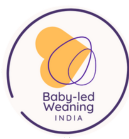Welcoming your baby to the world of solid foods is an exciting milestone. It’s about nourishment and encouraging curiosity, independence, and a healthy relationship with food. Baby-led weaning (BLW) is a method that allows babies to self-feed solid foods instead of starting on purees. This approach promotes exploration and enjoyment of various textures and tastes from the beginning. Here’s how you can empower your baby to embark on this delightful journey of food discovery.
What is Baby-Led Weaning (BLW)
Baby-led weaning is a method where babies are encouraged to feed themselves hand-held foods instead of being spoon-fed by an adult. This approach supports the development of fine motor skills, chewing skills, and self-regulation of food intake. BLW can start when your baby shows signs of readiness, typically around six months of age. These signs include being able to sit up with little or no support, showing interest in food, and reaching out to grab objects.
The Benefits of BLW
1. Develops Eating Skills: BLW encourages the development of hand-eye coordination, chewing skills, and dexterity to manage different food textures.
2. Promotes Healthy Eating Habits: Babies learn to eat according to their hunger cues, which helps in developing healthy eating patterns early on.
3. Broadens Palate: Exposure to a variety of foods from the start can encourage a more adventurous palate in later years.
4. Inclusive Family Meals: Babies join in family meal times, eating modified versions of the same foods, fostering a sense of belonging and participation.
Getting Started with BLW
1. Safety First: Ensure that all foods are of appropriate size, texture, and temperature to avoid choking hazards. Always supervise your baby during meals.
2. First Foods: Start with soft, easily graspable foods. Cooked vegetables like broccoli, carrots, and sweet potatoes are great options. Fruits like bananas, avocados, and pears can also be introduced in suitable sizes.
3. Go Slow: Introduce one food at a time and watch for any signs of allergies. There’s no rush; the goal is to let your baby explore and enjoy the process.
4. Stay Patient: Embrace the mess! Eating is a sensory experience. It might take time for your baby to ingest a lot of food, but the exploration is part of the learning process.
Safety Considerations
While BLW offers numerous benefits, it’s crucial to prioritise safety. Avoid hard, small, and round foods that can pose choking risks, such as nuts, grapes, and popcorn. Always supervise meal times and consider taking a pediatric first-aid course to feel more prepared.
Creating a Supportive Environment
Meal times should be relaxed and pressure-free. Sit with your baby, eat together, and model the joy of eating. This not only makes meal times enjoyable but also teaches your baby about the social aspects of eating.
If you need help with BLW, take our 1:1 Support, MasterClass Or Meal Guides
